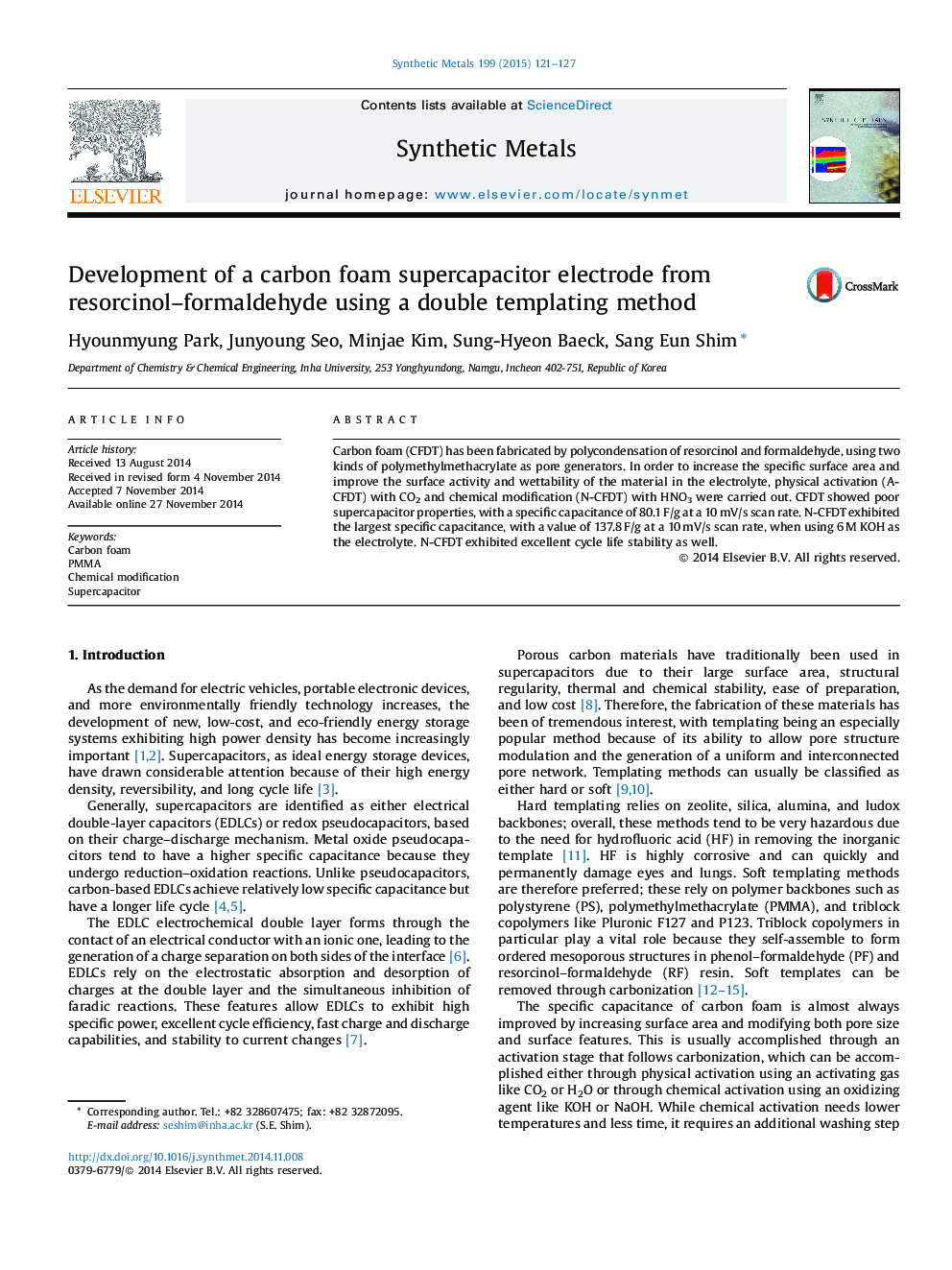| Article ID | Journal | Published Year | Pages | File Type |
|---|---|---|---|---|
| 1440781 | Synthetic Metals | 2015 | 7 Pages |
•Porous carbon foam has been fabricated by polycondensation of resorcinol and formaldehyde.•PMMA microspheres with two different sizes were used as pore generator.•The effects of activation and N-doping of carbon foam were investigated.•N-doped carbon foam exhibited large specific capacitance with improved cycle life stability.
Carbon foam (CFDT) has been fabricated by polycondensation of resorcinol and formaldehyde, using two kinds of polymethylmethacrylate as pore generators. In order to increase the specific surface area and improve the surface activity and wettability of the material in the electrolyte, physical activation (A-CFDT) with CO2 and chemical modification (N-CFDT) with HNO3 were carried out. CFDT showed poor supercapacitor properties, with a specific capacitance of 80.1 F/g at a 10 mV/s scan rate. N-CFDT exhibited the largest specific capacitance, with a value of 137.8 F/g at a 10 mV/s scan rate, when using 6 M KOH as the electrolyte. N-CFDT exhibited excellent cycle life stability as well.
